The best example of Edomae-style fish preparation and wet aging redirects here because it contains the most in-depth explanation for how fish is prepared.
This article is part of a series on Edomae sushi.

The chicken grunt, or Isaki (伊佐木/いさき), is another traditional fish served in Edomae-style sushi restaurants. It is in the Perciformes order of fishes known as grunts and is classified as a white fleshed fish (shiromi/白身).
The arrival of Isaki at the restaurant signals the arrival of the rainy season in Japan as it comes into season just around June. A delicate and light flavour. We age it at the restaurant for 2 to 3 days in order to bring out a more complex flavour and improve it’s texture. To learn more about the science of ageing fish read our article. Abundant in southern Japan, we receive our Isaki from the Island of Kyushu. The example, of how the fish is prepared here is applicable to the preparation of most other fishes.
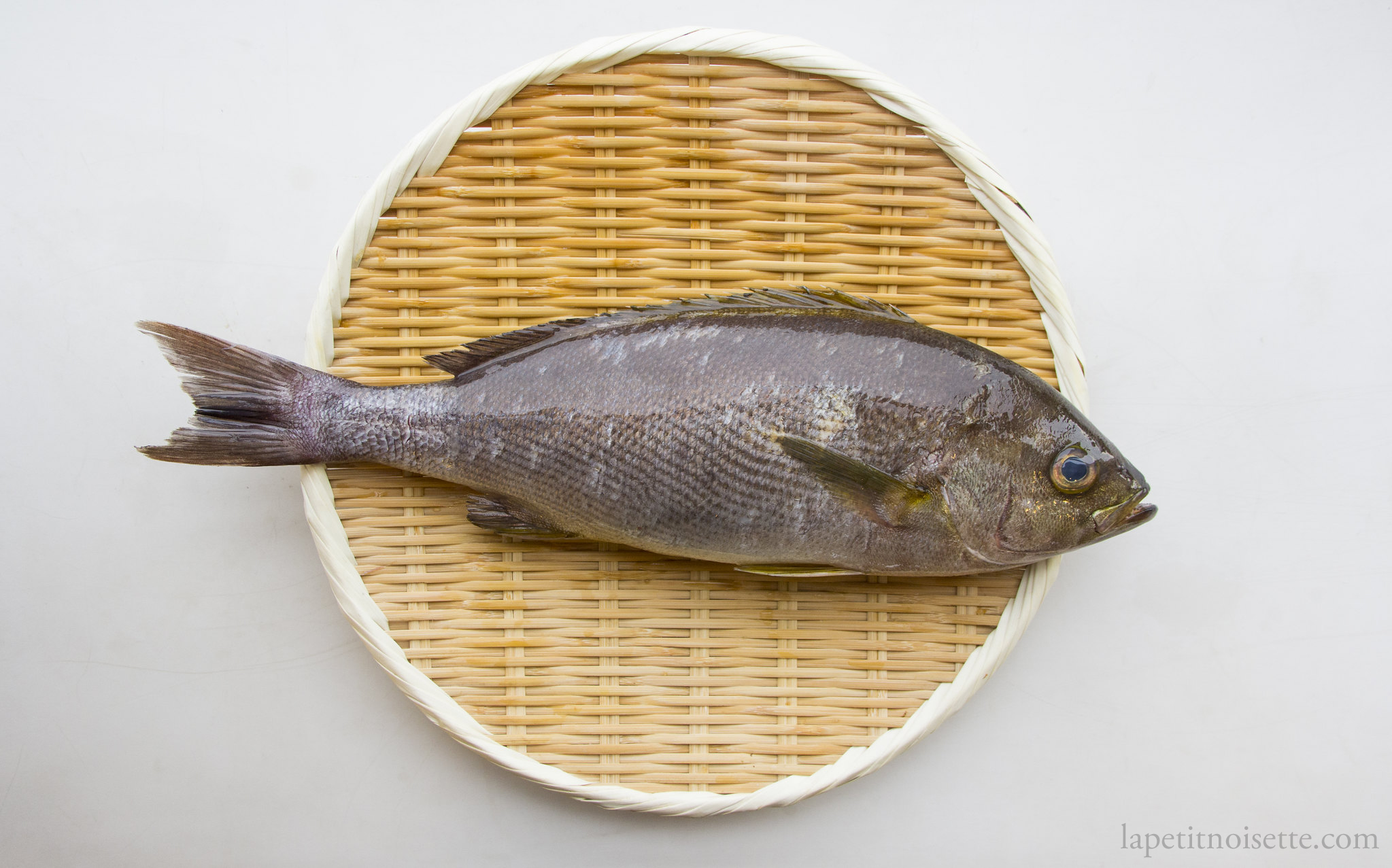
To begin preparing the fish, we first remove the guts and gills of the fish without removing the head. This allows us to age the fish with minimal exposure to oxygen as the flesh of the fish is not cut into.
In order for the fish to be suitable for ageing, it is killed using the Ikejime technique. This can be seen in the small cut made at the tail that allows the blood to be let out of the fish after the fish is killed.
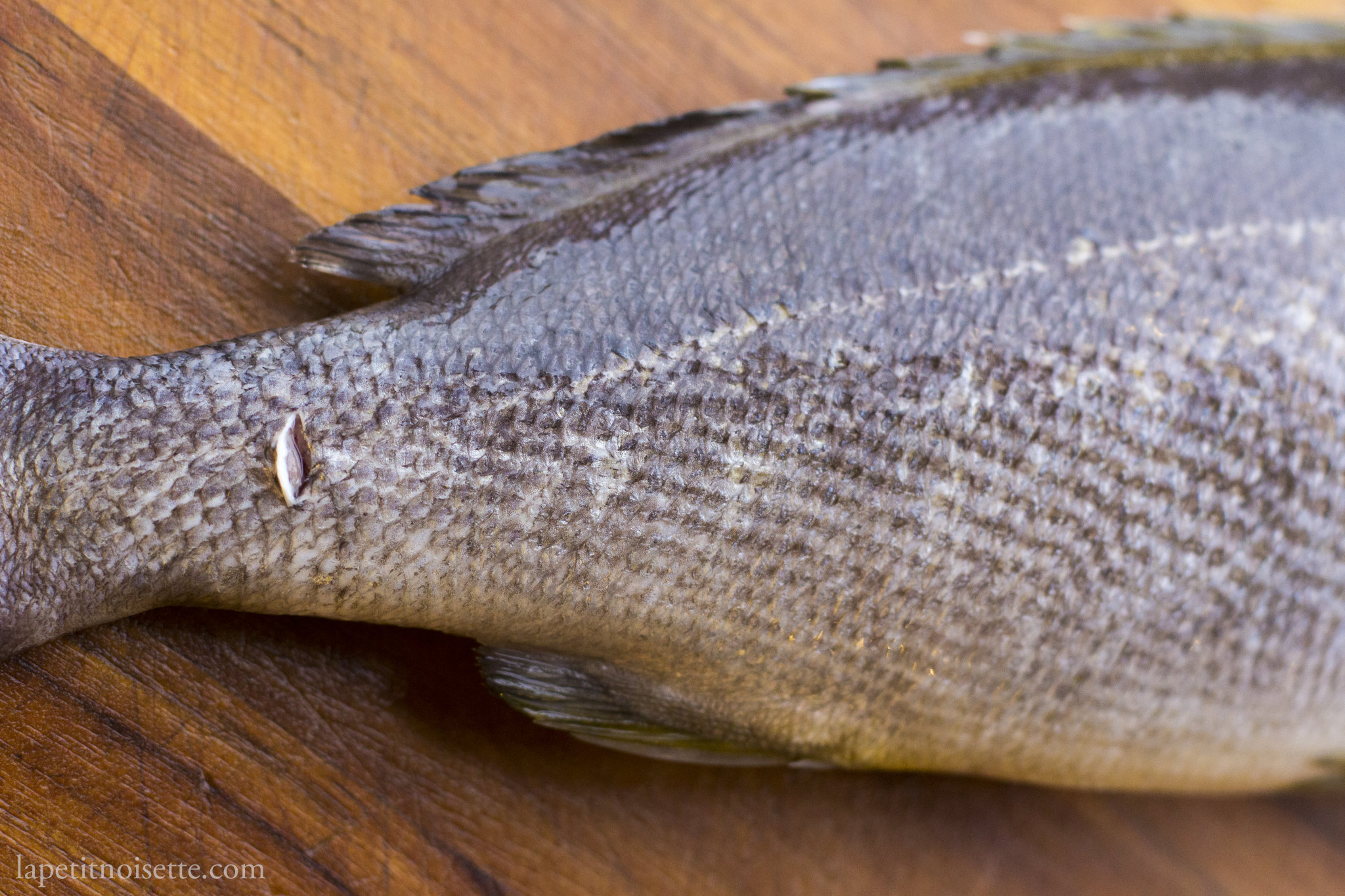
Edomae-style (江戸前鮨) preparation of Chicken Grunt (Isaki/伊佐木/いさき):
After washing the fish in cold water, start by descaling the fish. We descale the fish using a urokotori (鱗取り), a traditional Japanese fish scaler. Run the scaler against the direction of scale growth to most efficiently remove them. Wash away the scales and slime with cold water. Whilst descaling, we run a small stream of cold water onto the fish from the tap to prevent any scales from flying about.
After descaling the fish, we remove the gills of the fish. Opening the gill flap, insert the tip of the knife into the gill cavity and cut the two ends of the gills connecting the arches.
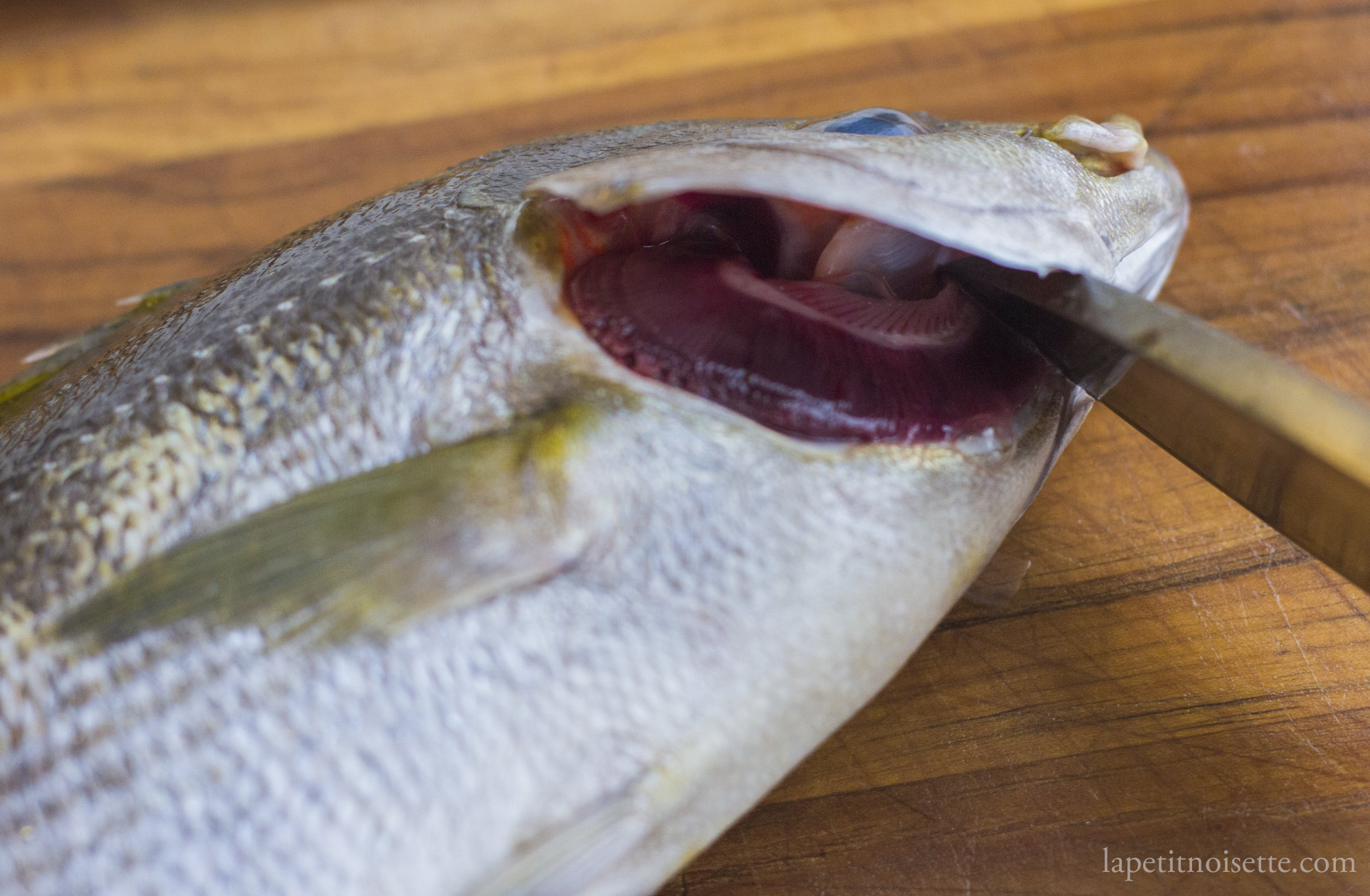
The cut is shown below.
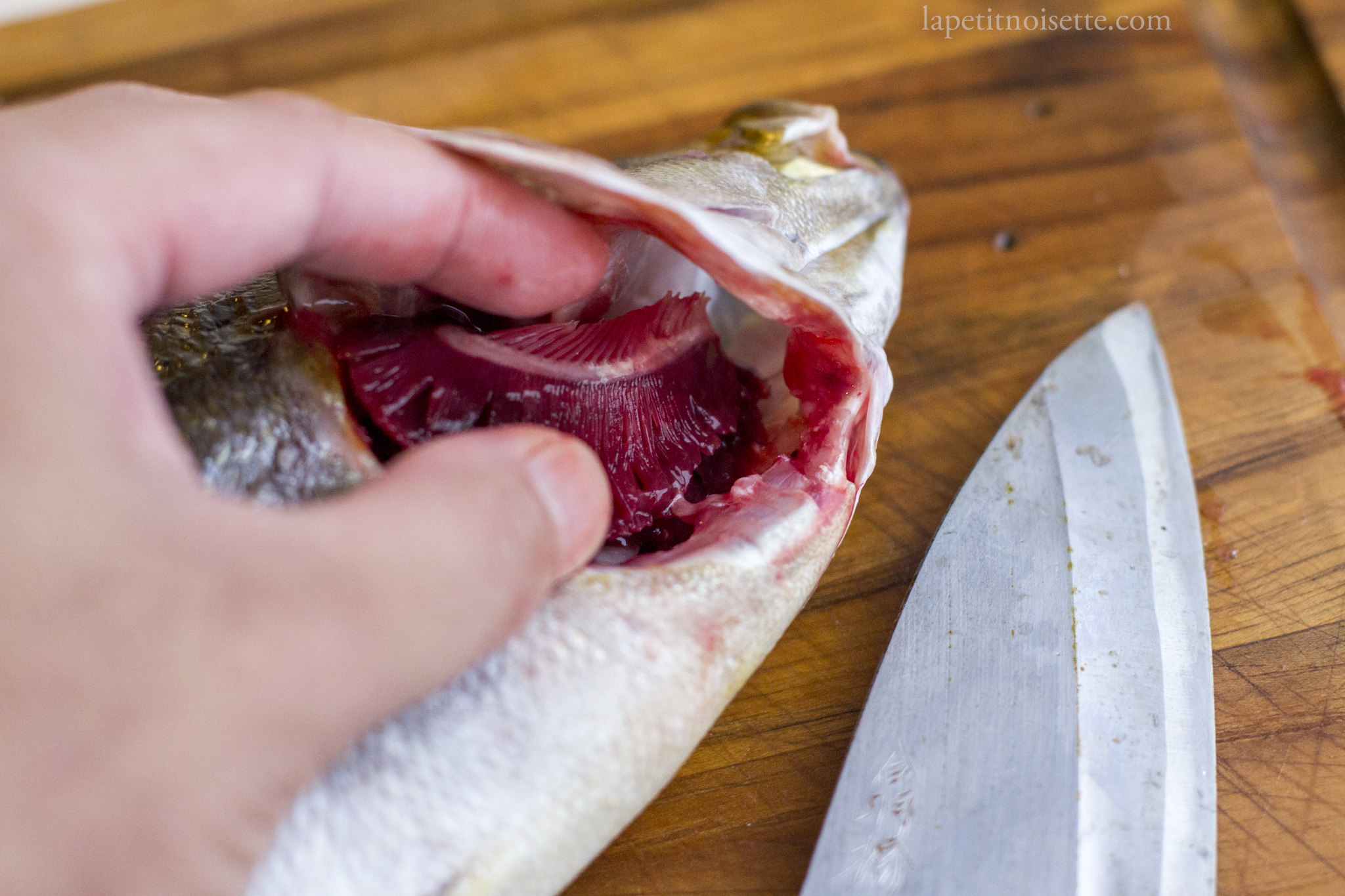
Next, break the bone connecting the collar of the fish to the head of the fish, allowing you to open the fish. Make a cut down the belly of the fish starting from just below the head all the way to the anus. The cut runs through the pelvic fins, separating them into right and left pelvic fin. The flesh in between the pelvic fin is tough and will require some force. This is why the sharpness of the knife is important. Be careful not to cut yourself.
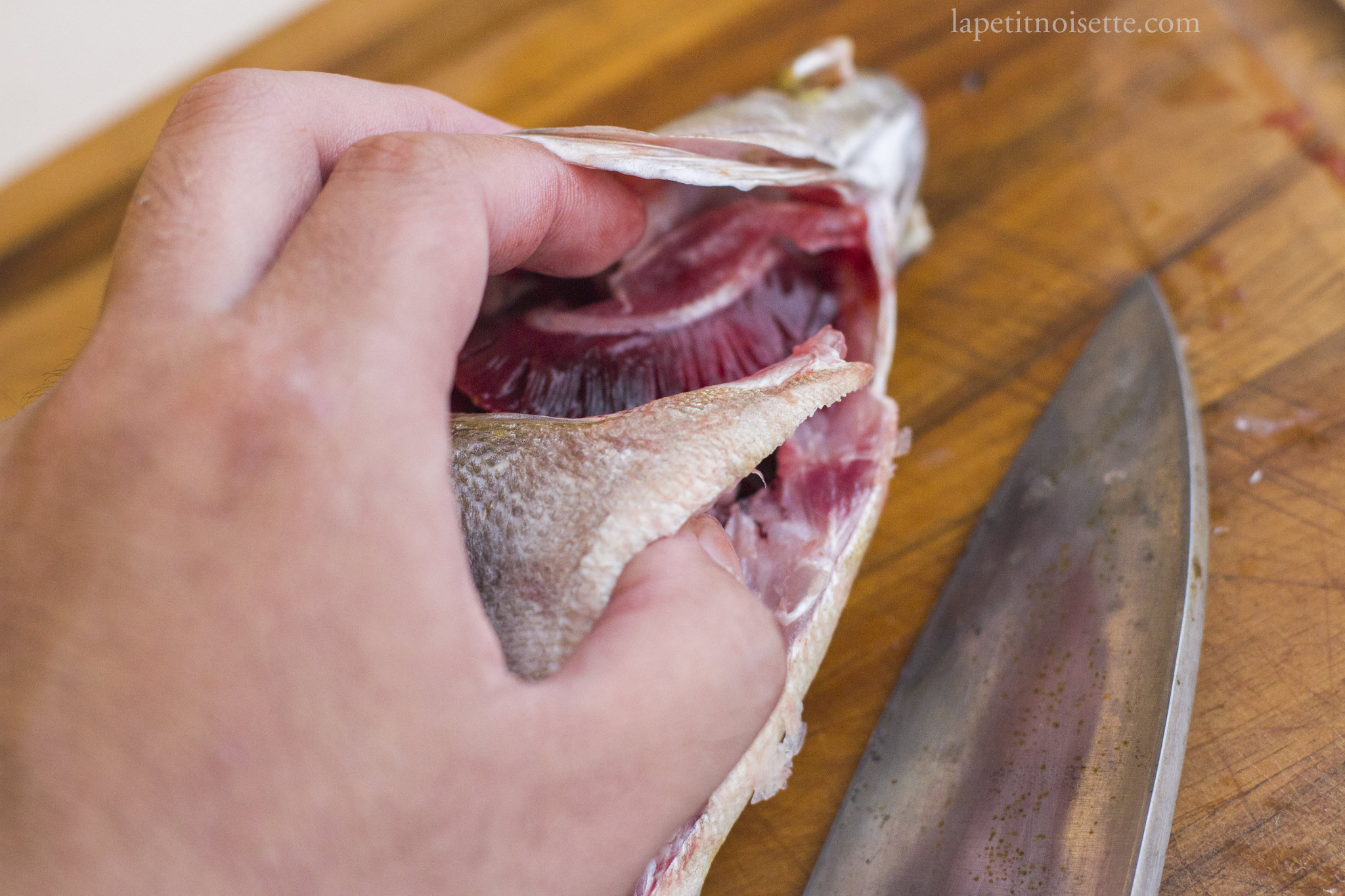 Open up the entire fish cavity and pull away the innards and gills, cutting away the point at which the gills are attached to the fish.
Open up the entire fish cavity and pull away the innards and gills, cutting away the point at which the gills are attached to the fish.
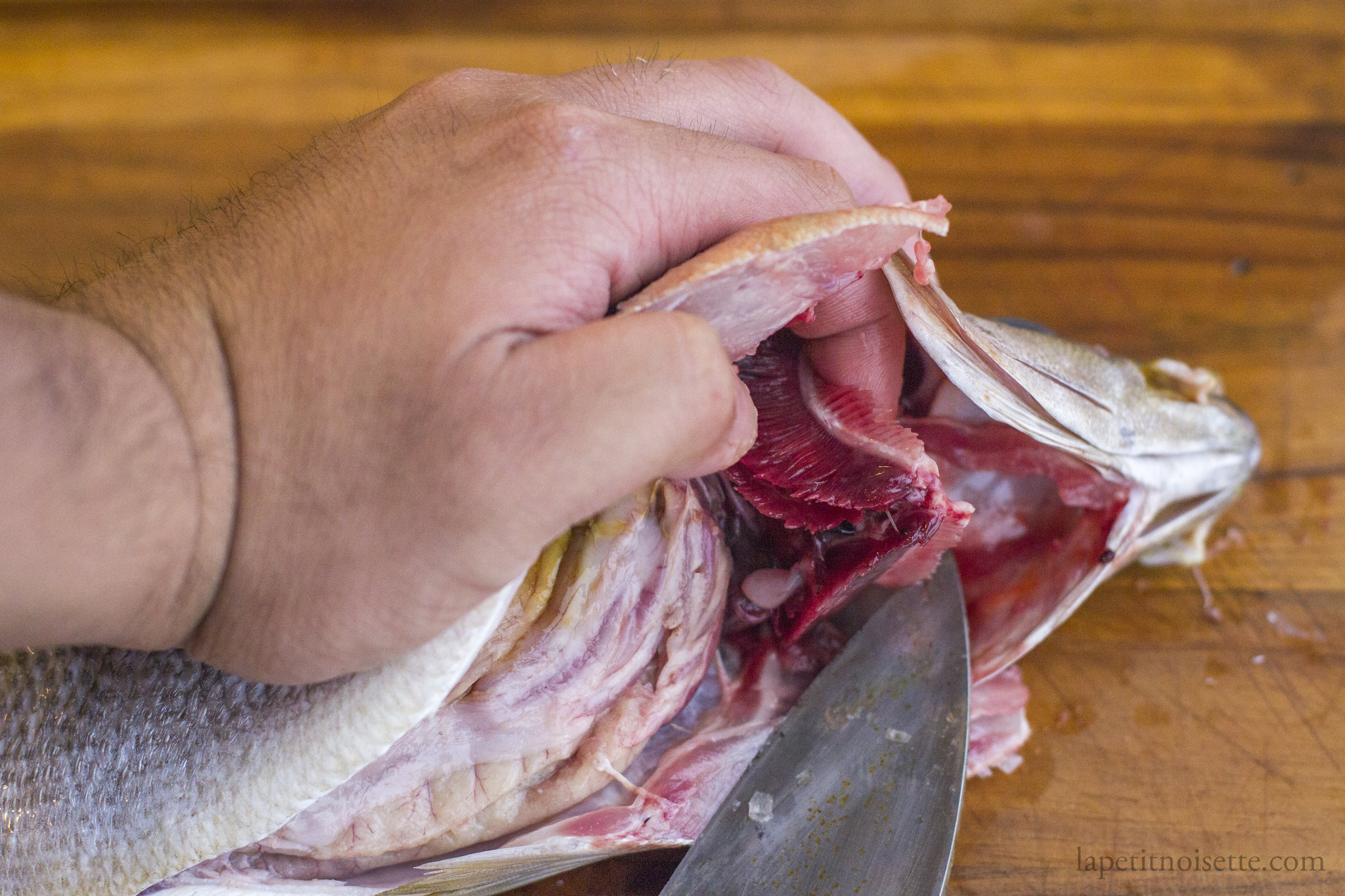
Rinse the cavity with cold water and clean throughly. Wash the chopping board and wipe dry. The cavity should be completely clean as any remaining dirt will rot during the ageing process.
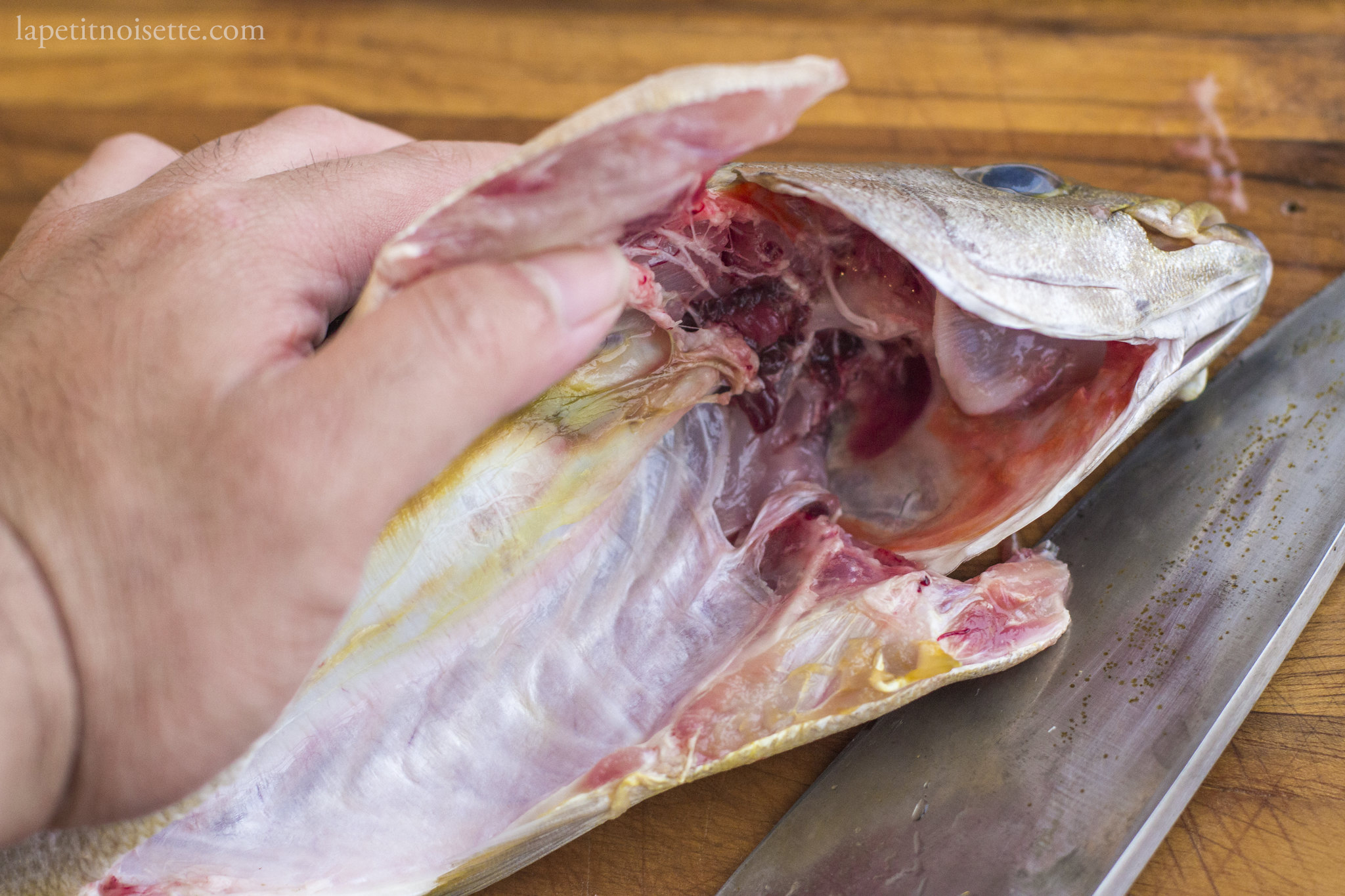
The fish’s air bladder is located at the centre of the cavity where the rib cage meets the backbone. The air bladder is connected to a blood line that needs to be removed. Cut open the bladder by running the knife through it all the way to the blood line underneath.
Whilst under a light stream of cold water, wash the cavity and remove the blood from the blood line. Use an old toothbrush the remove and bit and pieces.
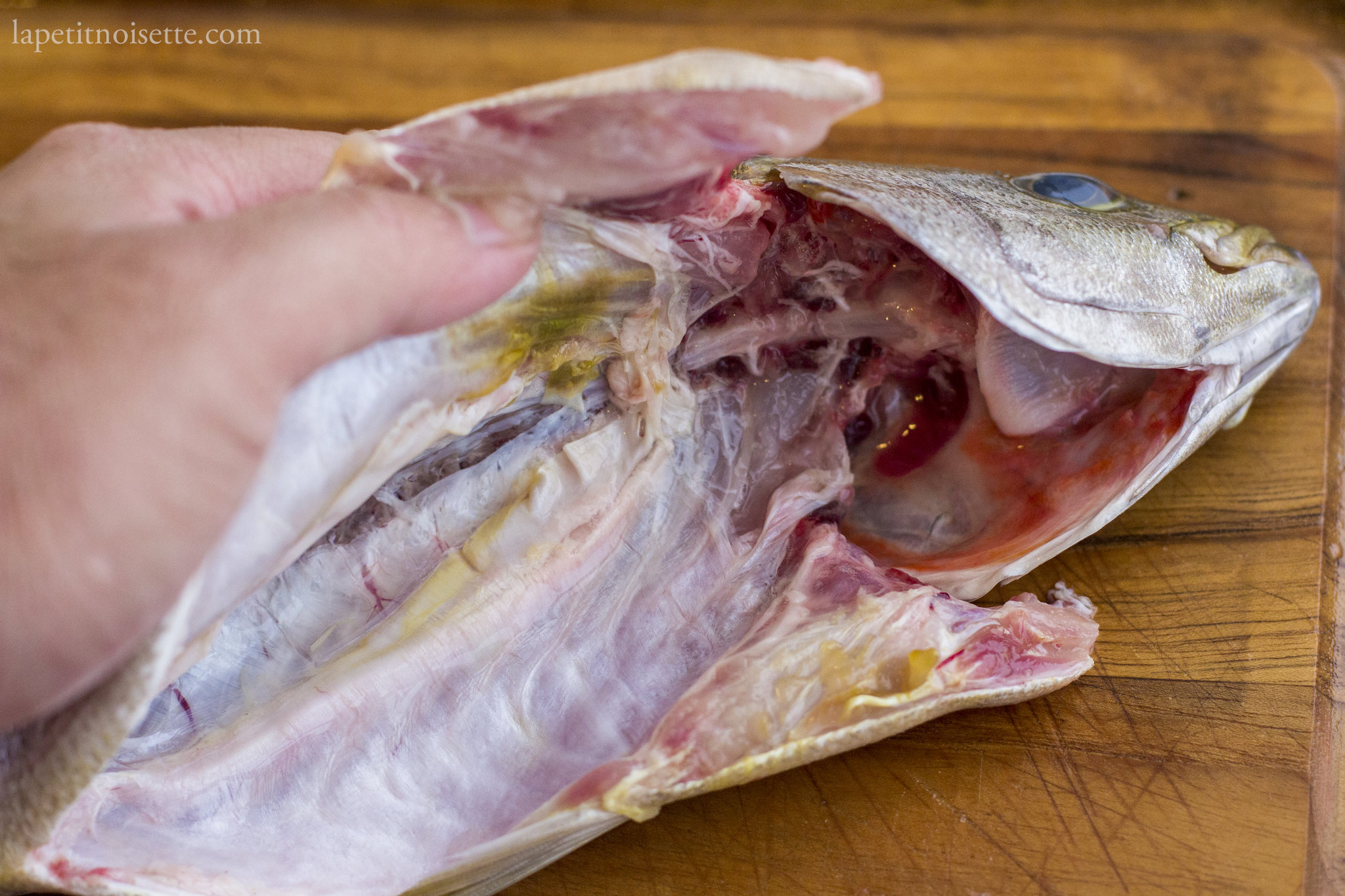
Insert fish paper (Magu roll/マグロッ) or paper towels into the stomach cavity and head cavity of the fish. This is to absorb any excess blood or moisture from inside the fish that would otherwise rot during ageing.
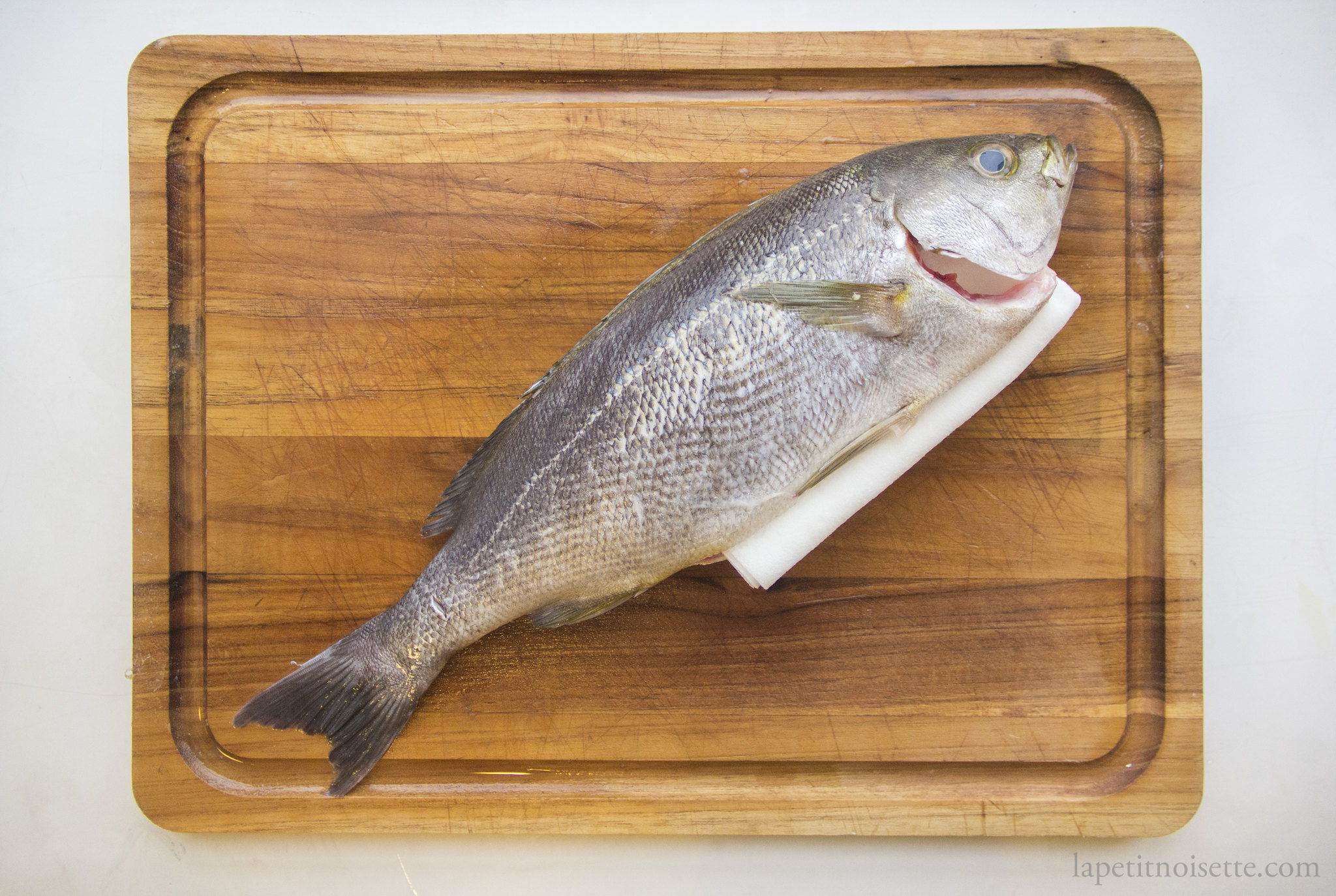
Place the fish inside a large plastic bag and remove all the air from the bag by bunching the end of the plastic bag together and sucking it out with your mouth. Alternatively use a vacuum pack machine. This minimises air exposure during ageing.
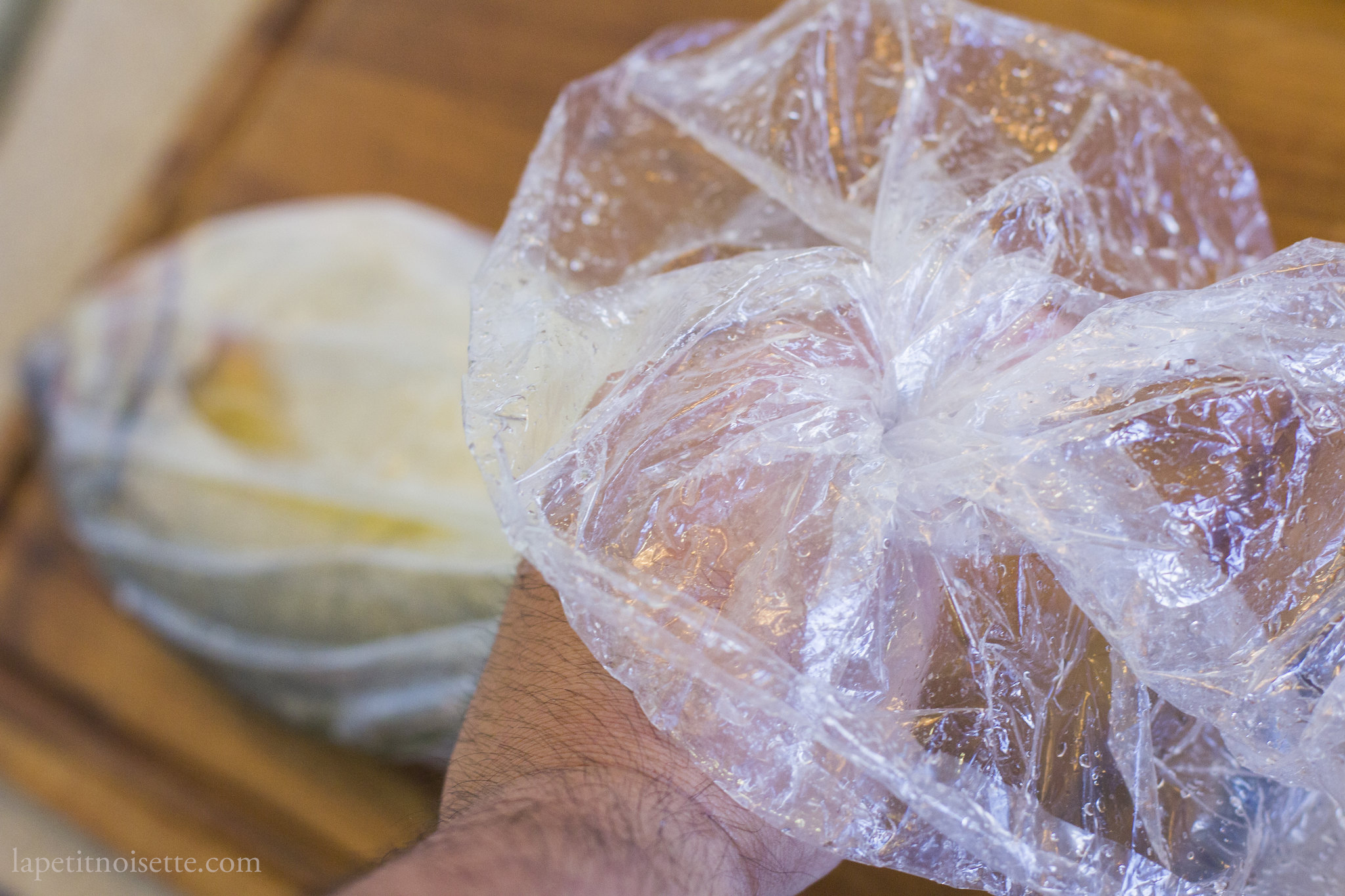
Tie the end of the bag to prevent any air from entering. Alternatively, if using a vac pack machine, the machine should automatically seal the bag.
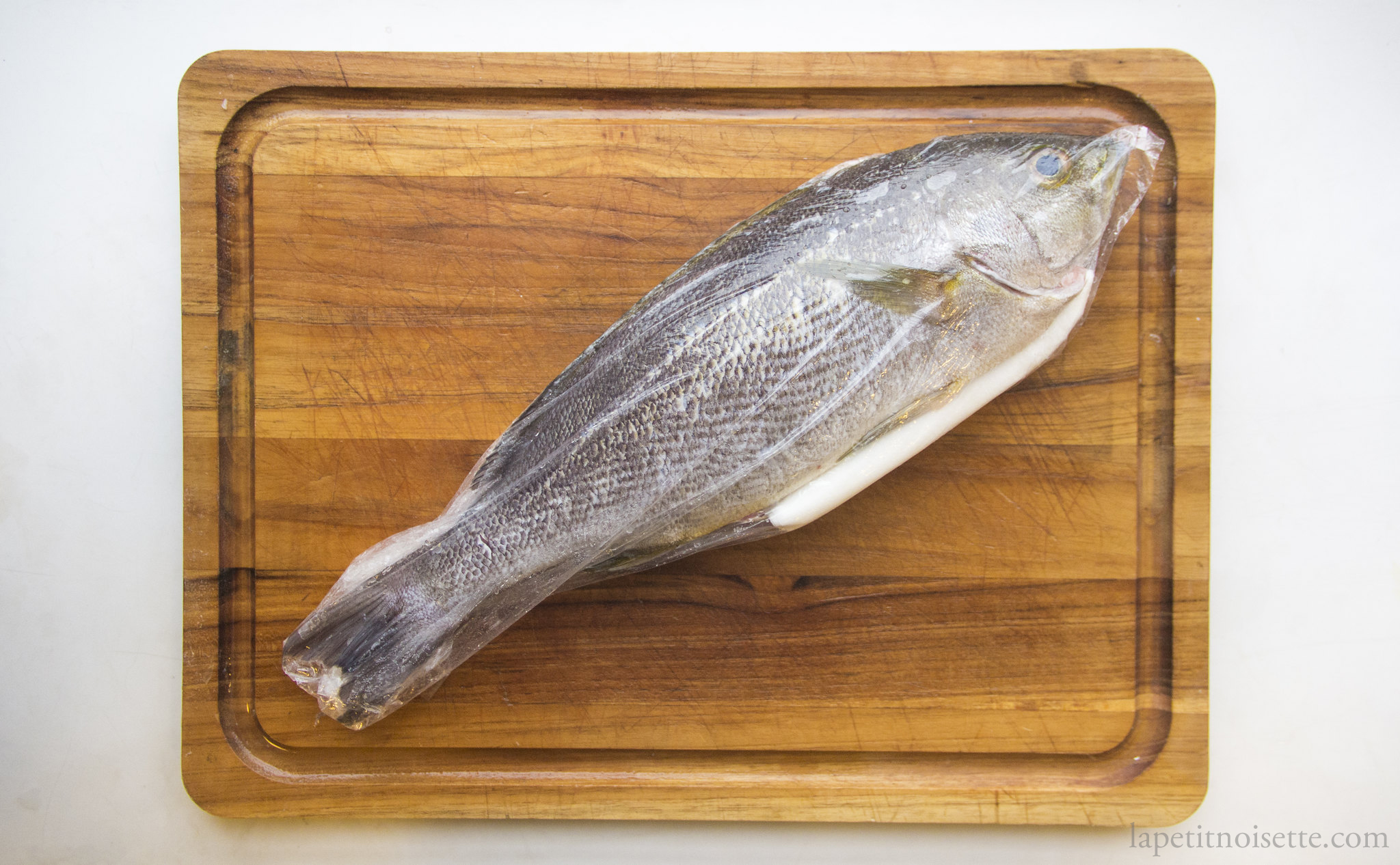
The fish is now ready for ageing. Place in a fridge set at 1-2°C for 1 to 2 days.
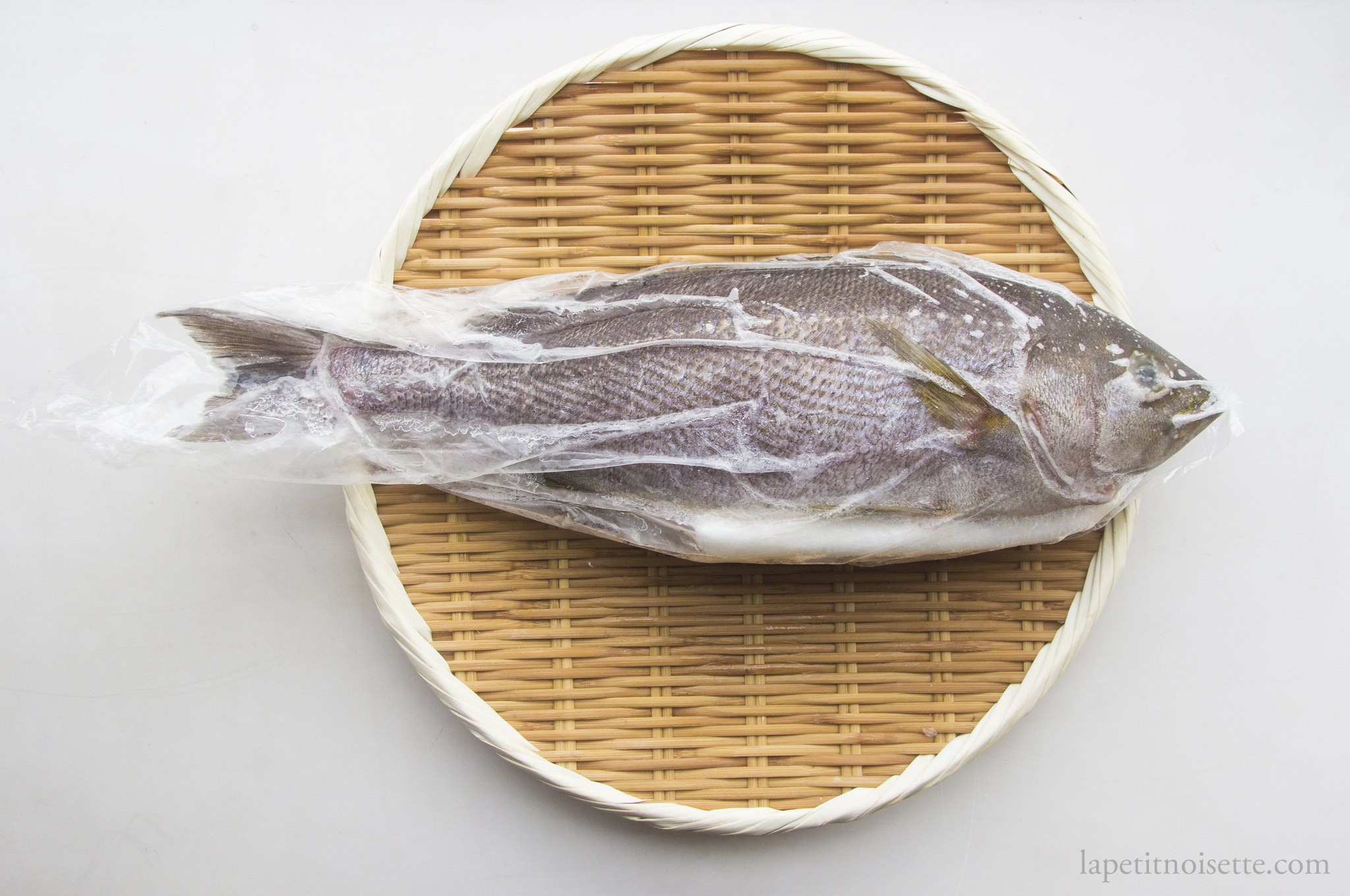
After ageing, cut open the bag and remove the fish. Discard the paper towels and place the fish on a chopping board.
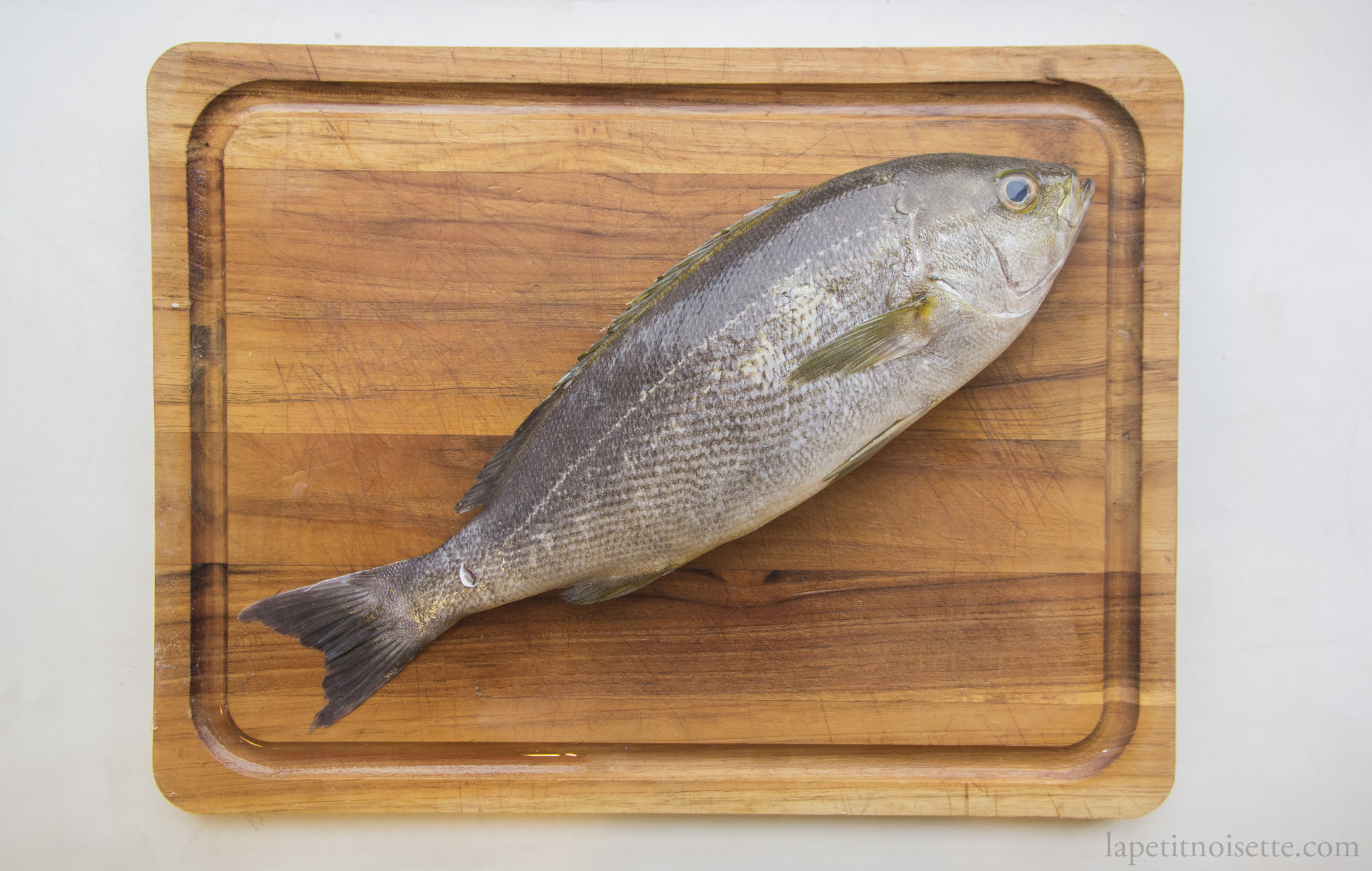
Remove the head of the fish and begin the filleting process. (Alternatively, remove the head after the filleting process).
Start by opening the internal cavity of the fish, inserting the tip of the knife and breaking the rib bones, separating them from the backbone.
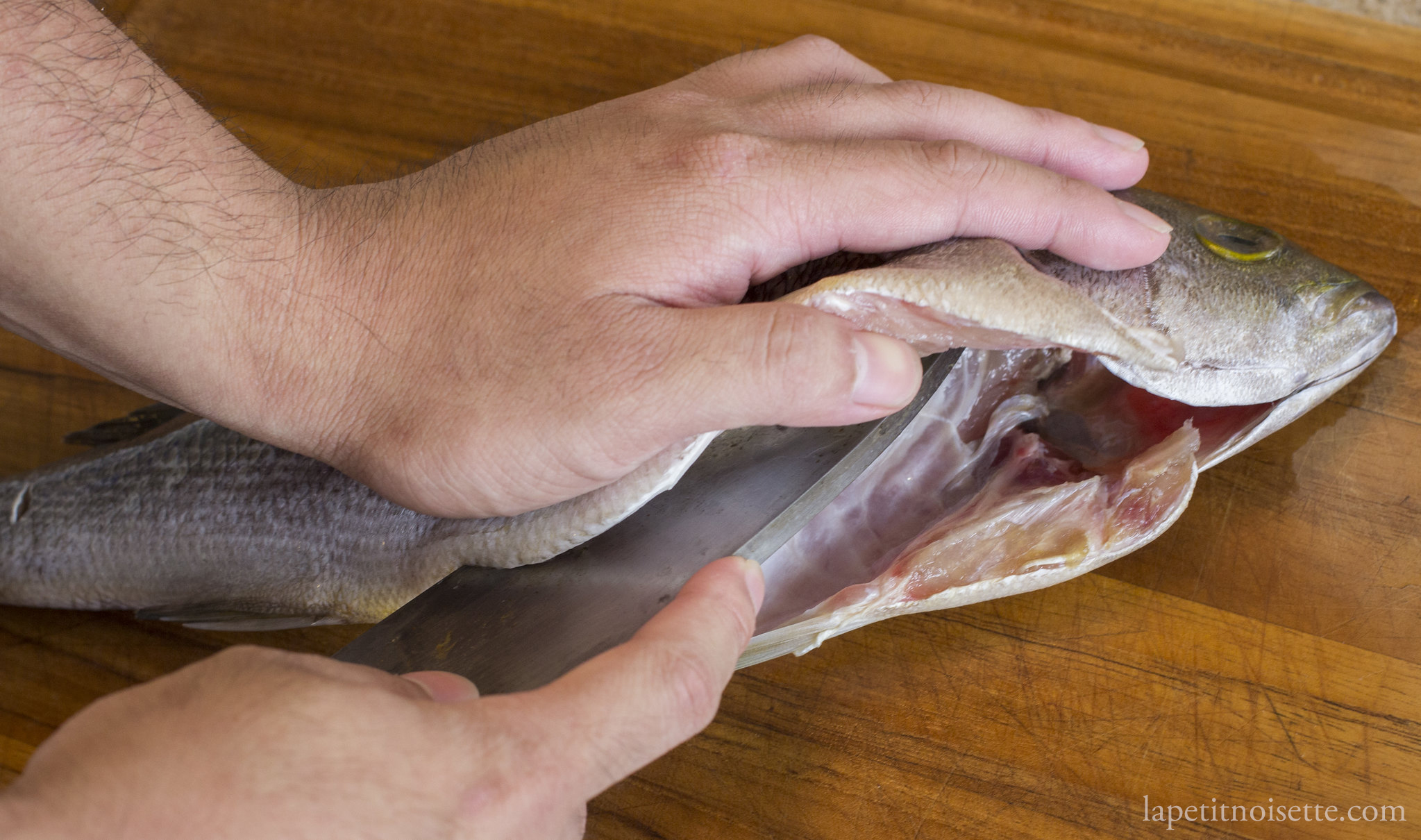
Next, cut the flesh starting from the end of the belly cavity all the way down to the tail, angling the blade towards the bone.
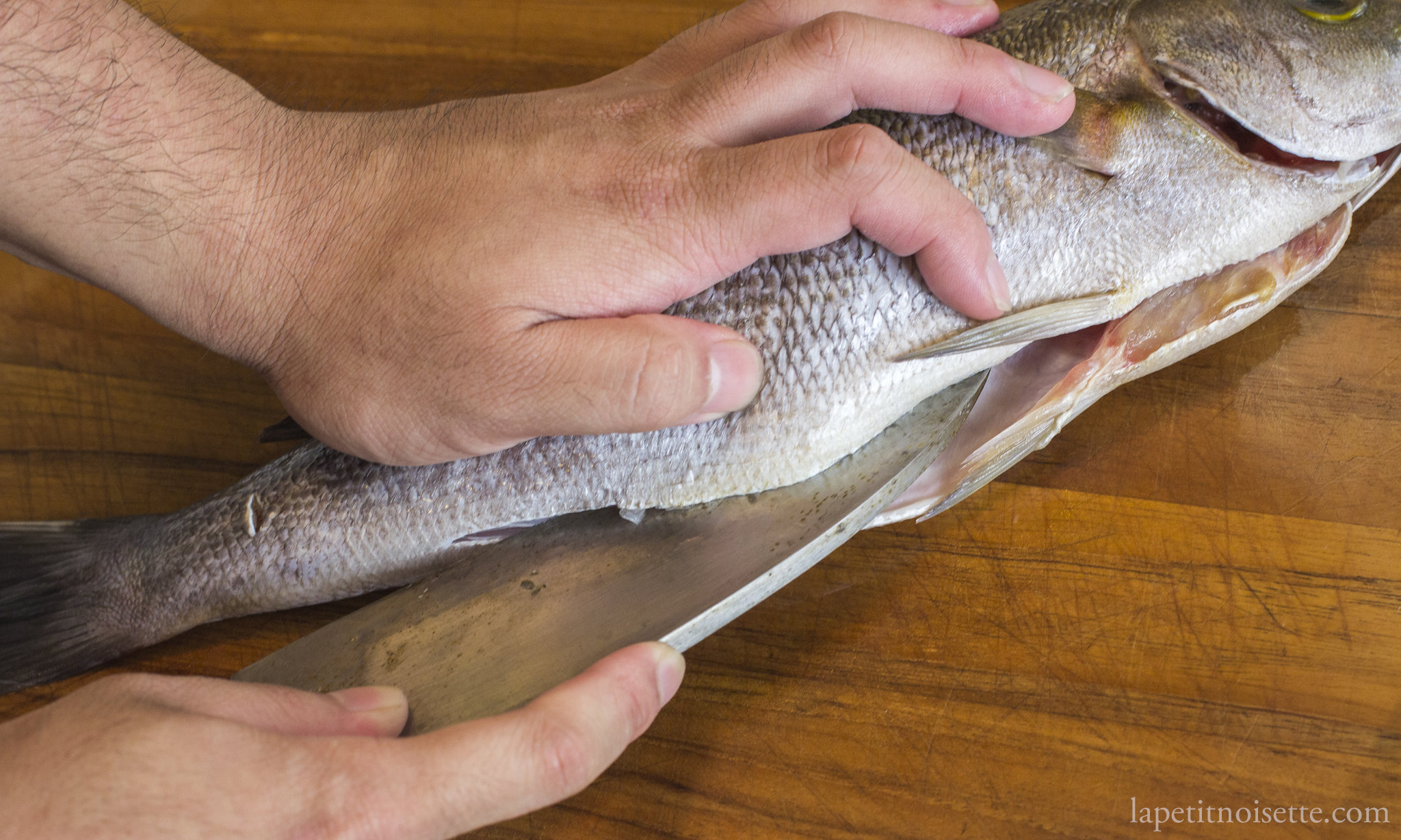
Turn the fish around and place the knife above the dorsal fin. Use your other hand to support the fish. In long cutting motions, separate the flesh from the spine of the fish, angling your blade downwards so that you can feel your blade running along the spine, minimising waste. if the long cutting motions prevents the flesh from being damaged too much from multiple cuts. Cut as close to the spine as possible to prevent flesh from being left on the bone.
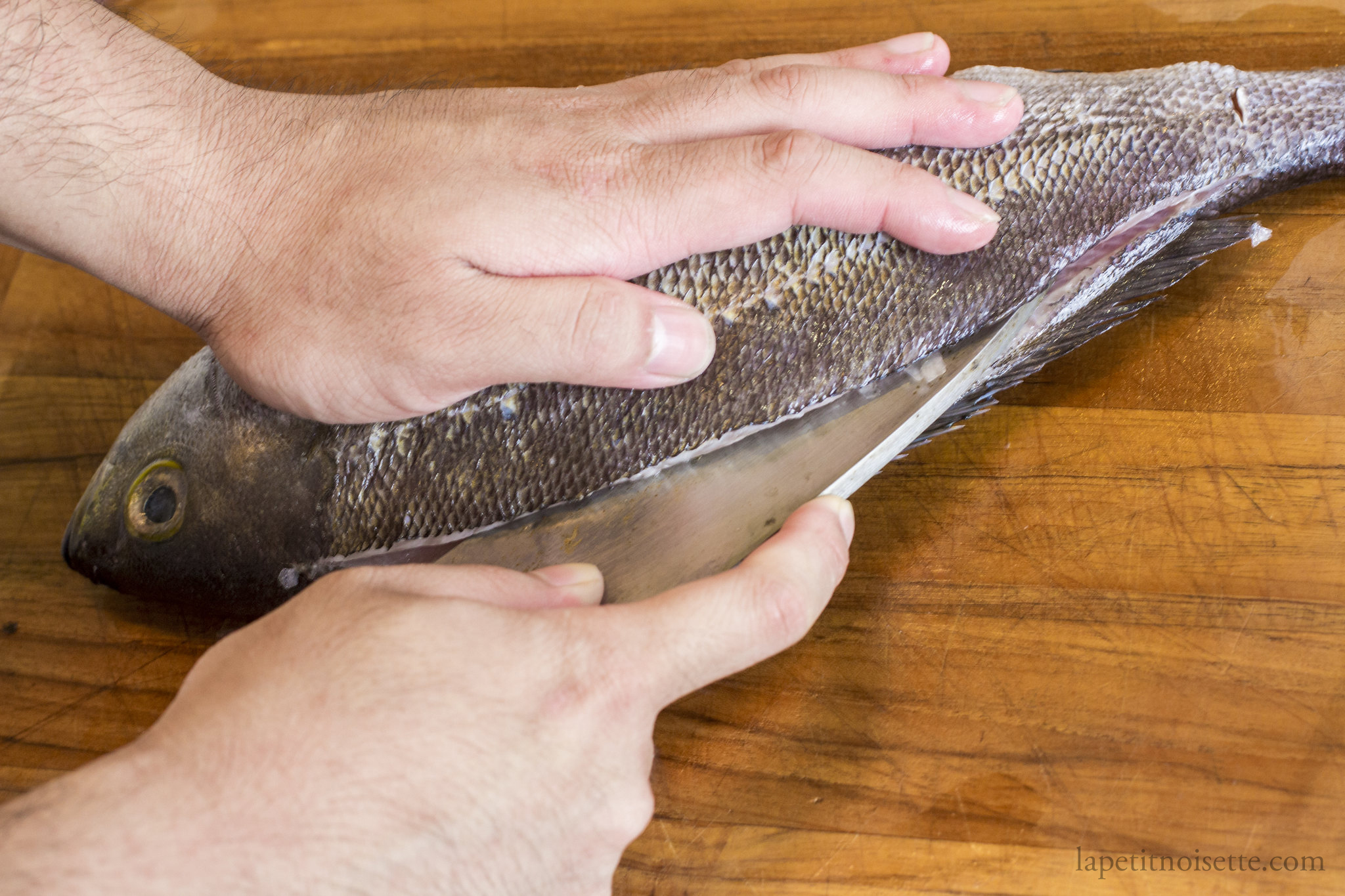
Continue the cutting motion until the entire fillet is separated from the fish. Making an incision at the tail of the fish and cut off the flesh attaching the fillet to the head.
Flip your knife so that it is facing upwards and gently separate the rib bones from the flesh just where it meets the pin bones.
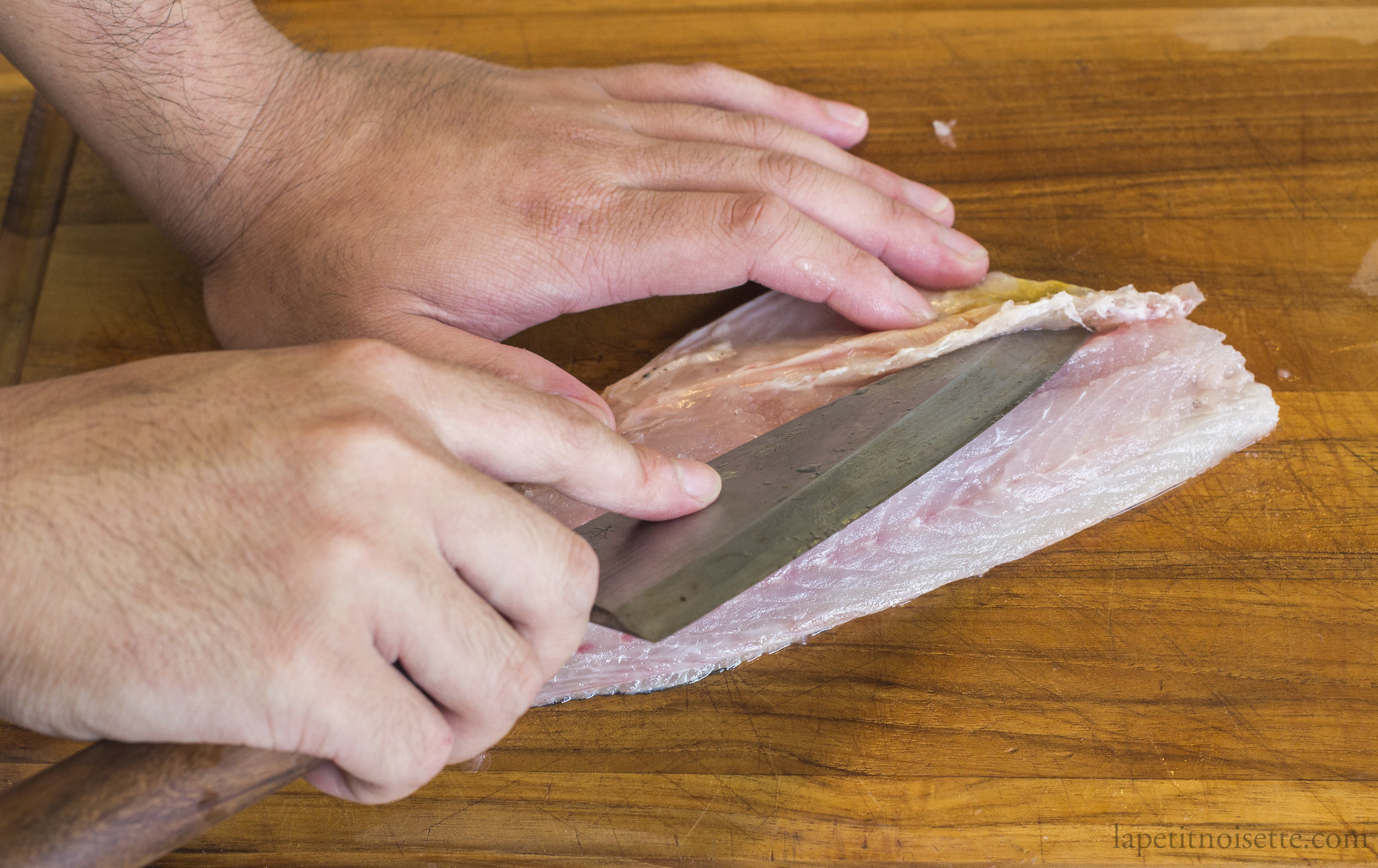
Turn your knife back and place the knife under the rib cage, cutting as to gently separate the rib cage from the flesh, angling the knife upwards towards the ribcage to reduce waste. Don’t worry about cutting yourself as the rib cage should be protecting your fingers.
To remove the pin bones, pull the pin bones using a pair of tweezers in the direction towards the head. Pulling the pin bones towards the tail is easier but will damage the flesh. Dip the tweezers in water to clean them occasionally. Repeating until you can not feel anymore pin bones. Remember to use a firm grip as not to break the pin bones, leaving bone fragments inside the fish. It is better to pull the pin bones slowly and steadily, rather than quickly.
To finish preparing the Isaki, repeat for the other side of the fish to extract another fillet.
Generously salt a colander and place the fillets on a colander. Salt the flesh of the fish as well.
Allow to rest for 20 to 25 minutes depending on the size. During that time, remove the pin bones of the fish. After salting, wash off the salt and place the fillets skin side down on a chopping board.
Remove the skin off the fillets by making a small cut underneath the tail of the fillet between the flesh and skin. Start by cutting into the flesh and stopping just at the skin. When the blade just touches the skin, use a back and forth motion on the skin to gently separate the fresh from the skin whilst angling the blade until it is flat. The blade should remain still whilst you only move the skin.
Continue the cutting motion until all the skin has been removed from the flesh. If the skin breaks halfway, don’t worry and start from the other end of the fillet. Using a paper towel to grip the skin of the fish allows you to have a more stable hold on the fillet, making it easier to cut.
If making nigiri with the skin on, you have the option to either lightly grill it under a charcoal grill or use a technique called Kawasimozukuri (かわしもずくり/皮霜造り), more commonly known as Yubiki (湯引き), where boiling hot water is splashed on the fish before the fish is quickly chilled in ice. At our restaurant we never blowtorch (aburi/炙り) our fish as we feel that the smell of gas fumes can be imparted onto the fish.
To carry out the Kawasimozukuri technique, using boiling water, quickly pour boiling water over the entire skin surface of the fish before quickly submerging the fish in an ice bath.
Does it matter which kind of salt you use to salt the fish/colander during prep? I know you mentioned in your Yokoi Akazu post that using a higher grade of salt will affect the outcome of the vinegar, but how about for fish?
Hello!
Sorry for the late reply. Yes it does matter what salt you use to salt the fish/colander during prep. You don’t need the most exotic salt that you can find, but a nice mid-range quality sea salt will do well. We found that normal cheap table salt does not work as the fish ends up with quite an astringent taste. One important step we did at the restaurant before salting the fish was to gently heat the sea salt in a pan for around 5 minutes to evaporate away any excess moisture in the salt. One cooled to room temperature, it was then ready to be used. A low flame was used as to not scorch the salt.
If you have any questions you can post it here and I’ll try and get back to you sooner!
Phil
Hello Phil,
Thank you for sharing many valuable information. I’m trying to wet aged fish at home, however, I could not finish a whole fish in one day. What should I do in this case? Can I continue to wet age the remaining? Or how should I preserve it?